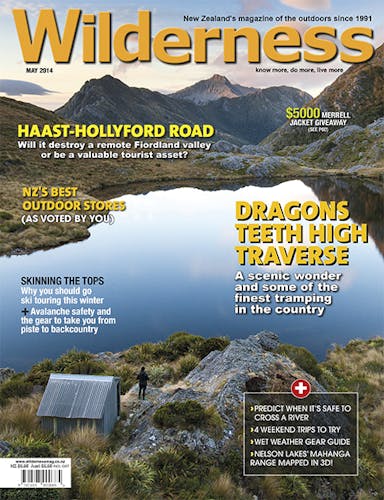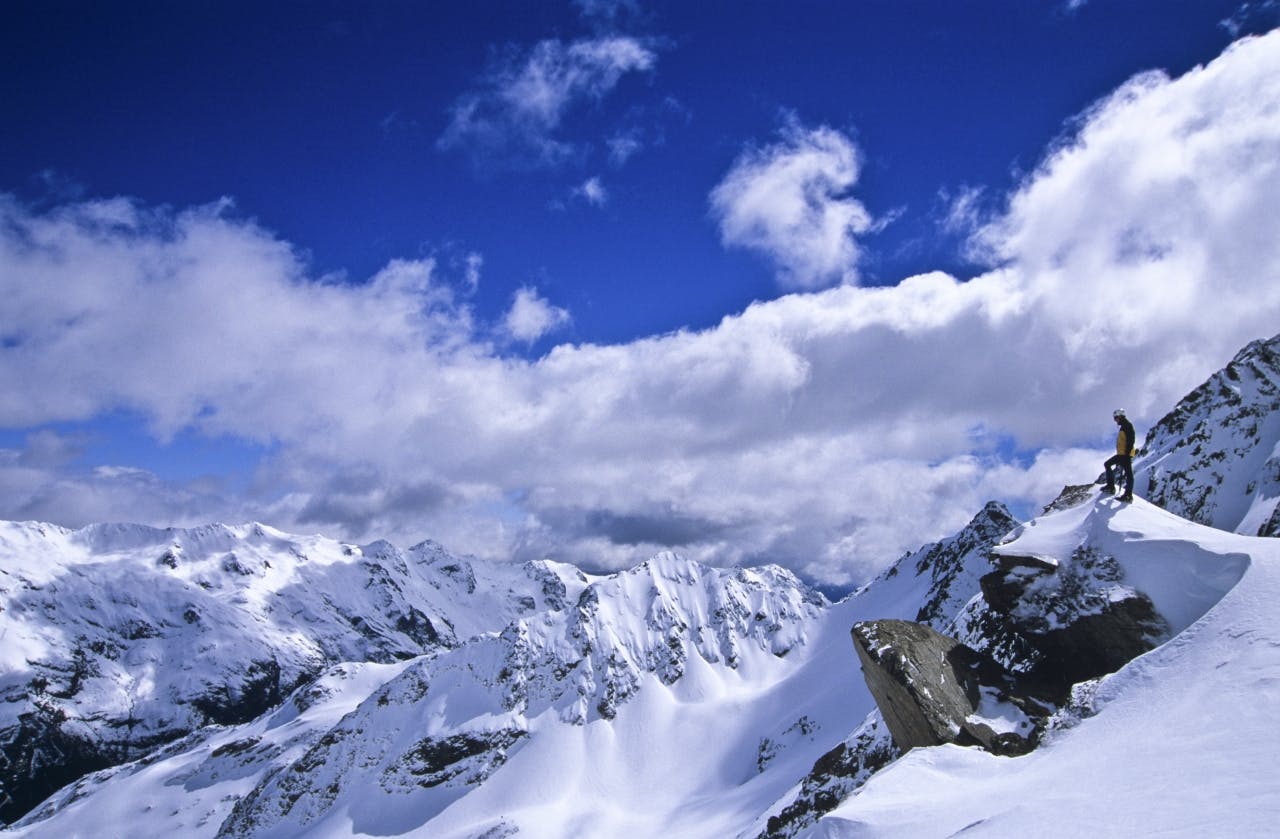Nelson Lakes National Park
These two ranges in Nelson Lakes National Park flank either side of the Sabine Valley, and boast some of the area’s highest peaks. The two converge at Mt Mahanga, above Waiau Pass, so form sentinels on either side of this section of the Te Araroa Trail. Both form the northernmost extent of the Southern Alps.
– Shaun Barnett
1. Mt Mahanga
A party led by surveyor James Park in 1884 first climbed this 2196m craggy peak. They mistakenly thought they had climbed Mt Franklin, then considered to be as high as 3000m. The easiest route to the summit is a scramble from Waiau Pass.
2. Waiau Pass
At 1870m, Waiau Pass forms the highest point of the Te Araroa Trail. The pass provides a good route between the Sabine and Waiau valleys, but although poled and well-trodden, should not be under-estimated. It’s exposed during bad weather and when snow lies on the pass should be approached with full alpine equipment. In the right conditions it’s a wonderful crossing.
3. Lake Constance
Lake Constance formed behind a moraine wall left by glaciers in the last Ice Age. A large alpine lake set beneath impressive mountains, it forms the headwaters of the Sabine River West Branch, which trickles through the moraine wall to feed Blue Lake.
4. Blue Lake and Blue Lake Hut
Arguably the finest spot in Nelson Lakes, this exquisite lake lies nestled among the beech forest of a subalpine basin. Recent research found that the lake has some of the highest water clarity on Earth, exceeding even that of the Pupu Springs. Nearby Blue Lake Hut has 16 bunks.
5. Moss Pass
Moss Pass is a challenging tramping route between the Sabine and D’Urville valleys, connecting Blue Lake and George Lyon Huts, and the only formal track over the Mahanga Range.
6. Mt Franklin
At 2340m, Mt Franklin is the highest peak in the national park, eclipsing Mt Travers by a slender margin of two metres. It’s named after Arctic explorer Sir John Franklin. Climbers normally tackle the peak from the West Sabine Valley, although routes from the East Sabine are possible, too. The most direct route accesses the peak using a steep gully directly west of the peak, and north of Blue Lake.
7. George Lyon Hut
Originally called Ella Hut, this refuge was renamed after long-term ranger George Lyon, who played an important role developing the park during the 1960s and 1970s. Lyon planned and built several two-room huts, and this one is the most original of his designs remaining.
8. Morgan Hut
Morgan Hut makes a useful resting place for tramping parties travelling up or down the D’Urville Valley. It lies halfway between George Lyon and D’Urville huts.
9. West Sabine Hut
Lying near the junction of the Sabine River east and west branch, West Sabine Hut occupies a useful position for trampers tackling several different routes in the park. Those crossing Travers Saddle usually stay in the hut and it also forms a convenient overnight stop en route to Blue Lake Hut. More adventurous parties use the hut as a launching point for the untracked East Sabine.
10. Mt Misery and Mt Misery Hut
Lying at the northern extremity of the Mahanga Range, Mt Misery is accessible on a track from Lake Rotoroa. A small two-bunk hut occupies a delightful alpine basin on the tops.








